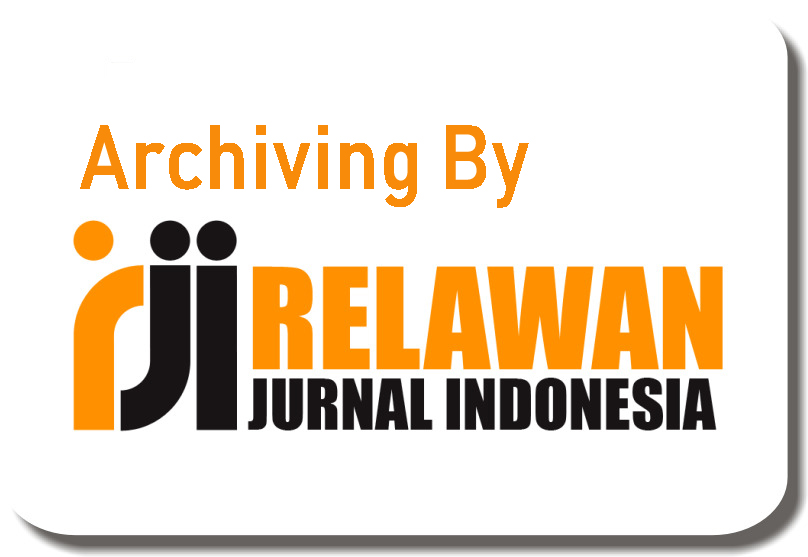EFL Learners' Preferences for Multimodal Learning Materials at the Secondary School Level
Abstract
This study explores secondary school EFL learners' preferences for multimodal learning materials, which addresses the need for learner-centered strategies in 21st century education. Although existing research highlights the general benefits of multimodal teaching, few studies have examined students' specific preferences for text, audio, and video formats. Using a quantitative descriptive design, data was collected from 132 junior high school students in Indonesia through a VARK-based questionnaire and Likert-scale items. The results showed that video was the most preferred medium (50.8%), followed by text and audio. Students reported that video materials were more engaging and effective in improving comprehension and motivation. Although the VARK model provides background insights, this study shows that learners' actual media choices have more influence on instructional design. This demands the use of multimedia resources that reflect students' preferences and enhance engagement in EFL learning.
Keywords
Full Text:
PDFReferences
Apriani, E., & Morgana, R. (2021). Multimodal resources to enrich meaning construction by EFL teacher. Article in Journal of English Education and Teaching. https://doi.org/10.33369/jeet.5.1.123-137
Cabual, R. A. (2021). Learning styles and preferred learning modalities in the new normal. OALib, 08(04), 1–14. https://doi.org/10.4236/oalib.1107305
Chinnapun, D., & Narkkul, U. (2024). Enhancing learning in medical biochemistry by teaching based on VARK learning style for medical students. Advances in Medical Education and Practice, 15, 895–902. https://doi.org/10.2147/AMEP.S472532
Cope, B., & Kalantzis, M. (2009). “Multiliteracies”: new literacies, new learning. Pedagogies: An International Journal, 4(3), 164–195. https://doi.org/10.1080/15544800903076044
Creswell, J. W. (2009). Qualitative, Quantitative, and Mixed-Methods Research. In Microbe Magazine (Vol. 4, Issue 11). https://doi.org/10.1128/microbe.4.485.1
Firmansyah, M. B., Bahasa, P., Indonesia, S., Pedagogi, F., & Psikologi, D. (2021). The effectiveness of multimodal approaches in learning (Vol. 4).
Hendrawaty, N., Sakhiyya, Z., & Wahyuni, S. (2024). Students’ perceptions on the integration of multimodality in vocabulary classroom practices.
Isma’il, A., & Sodangi, U. (2025). Development of VARK learning styles assessment instrument for secondary school students. International Journal of Educational and Psychological Sciences, 3(2), 183–200. https://doi.org/10.59890/ijeps.v3i2.484
Izatullah, S., Nasir, R., & Gul, F. (2022). A study to examine the relationship between english language proficiency and academic achievement of students in higher education Institutions. Global Educational Studies Review, VII(I), 164–171. https://doi.org/10.31703/gesr.2022(vii-i).17
Jambi, U., Jambi, I., & Ali, R. M. (2022). The EFL undergraduate students and english reading style: from one english education program. http://jurnal.radenfatah.ac.id/index.php/edukasihttp://jurnal.radenfatah.ac.id/index.php/edukasi
Jewitt, C. (2008). Multimodality and literacy in school classrooms. Review of Research in Education, 32, 241–267. https://doi.org/10.3102/0091732X07310586
Julinar, J. (2019). Teachers’ perception towards the use of multimodality in teaching reading.
Kress, G. R., Van Leeuwen, T., & Van Leeuwen, D. H. S. S. T. (2001). Multimodal discourse. https://books.google.co.id/books?id=R494tAEACAAJ
Laadem, M., & Mallahi, H. (2020). Multimodal pedagogies in teaching english for specific purposes in higher education: perceptions, challenges and strategies. International Journal on Studies in Education, 1(1), 33–38. https://doi.org/10.46328/ijonse.3
Li, X., Odhiambo, F. A., & Ocansey, D. K. W. (2023). The effect of students’ online learning experience on their satisfaction during the COVID-19 pandemic: the mediating role of preference. Frontiers in Psychology, 14. https://doi.org/10.3389/fpsyg.2023.1095073
Lim, F. V. (2004). Developing an Integrative Multi-semiotic Model. https://www.researchgate.net/publication/306008813
Mills, K. A. (2010). A review of the “‘digital turn’” in the new literacy studies. Review of Educational Research, 80(2), 246–271. https://doi.org/10.3102/0034654310364401
Mirza, T. I. (2025). Learning preferences in medical education: an investigative study of teachers and students utilizing the VARK. Article in Health Professions Educator Journal. https://doi.org/10.53708/hpej.v7i2.3469
Nicolaou, C., Matsiola, M., & Kalliris, G. (2022). The challenge of an interactive audiovisual-supported lesson plan: information and communications technologies (ICTs) in adult education. Education Sciences, 12(11). https://doi.org/10.3390/educsci12110836
Nurhaliza, & Sari, V. D. A. (2023). Improving eighth graders’ vocabulary mastery through students’ learning style-VARK-based flashcards. SAGA: Journal of English Language Teaching and Applied Linguistics, 4(1), 15–24. https://doi.org/10.21460/saga.2023.41.164
Pavlidou, K. (2022). MULTIMODALITY AS A DEVOLOPMENT FACTOR OF LITERACY IN MULTILITERACIES. International Journal for Innovation Education and Research, 10(4), 236–249. https://doi.org/10.31686/ijier.vol10.iss4.3737
Ramadhan, F., & Waloyo, E. (2018). Exploring communication strategies in speaking practice at second grade students at state senior high school. 3(1).
Safithri Armin, D. (2023). EFL teachers’ preference teaching styles: an interpretative study. 9(1), 24–36. http://ejournal.unsub.ac.id/index.php/FKIP
Subagja, S., & Rubini, B. (2023). Analysis of student learning styles using Fleming’s VARK model in science subject. JURNAL PEMBELAJARAN DAN BIOLOGI NUKLEUS, 9(1), 31–39. https://doi.org/10.36987/jpbn.v9i1.3752
Susdarwono, E. T., & Peradaban, U. (2022). STUDENT PREFERENCES ON TYPES OF LEARNING MODELS RELATED TO HUMAN AND OUTER SPACE MATERIALS. Desember, 3(2), 228–237. http://ejournal.undhari.ac.id/index.php/de_journal
Szawerna, M. (2023). Editorial: theoretical and analytical explorations of multimodality. Anglica Wratislaviensia, 61(1), 9–11. https://doi.org/10.19195/0301-7966.61.1.1
Tadayonifar, M., & Valizadeh, M. (2021). The impacts of reading strategy instruction on improving the reading comprehension of students with different learning styles. https://www.researchgate.net/publication/354199308
Tang, K. H. D. (2023). Student-centered approach in teaching and learning: what does it really mean? Acta Pedagogia Asiana, 2(2), 72–83. https://doi.org/10.53623/apga.v2i2.218
Vanegas, C. V., Puerta, J. E. A., Ceballos, M. N., & Sánchez, J. M. M. (2024). Personalized learning: an adaptive approach based on the VARK model to improve distance education. Revista de Gestão Social e Ambiental, 18(12), e010257. https://doi.org/10.24857/rgsa.v18n12-046
Xie, Q., Liu, X., Zhang, N., Zhang, Q., Jiang, X., & Wen, L. (2021). Vlog-based multimodal composing: Enhancing EFL learners’ writing performance. Applied Sciences (Switzerland), 11(20). https://doi.org/10.3390/app11209655
Yuniarti, Y., Yulian, R., & Yuniarti, Y. (2022). Digital story telling based on multimodal elements on EFL learners’ speaking performance. JPI (Jurnal Pendidikan Indonesia), 11(2), 308–316. https://doi.org/10.23887/jpiundiksha.v11i2.40217
DOI: https://doi.org/10.31004/jele.v10i3.980
Refbacks
- There are currently no refbacks.
Copyright (c) 2025 Dian Pratiwi, Novia Trisanti

This work is licensed under a Creative Commons Attribution-ShareAlike 4.0 International License.



